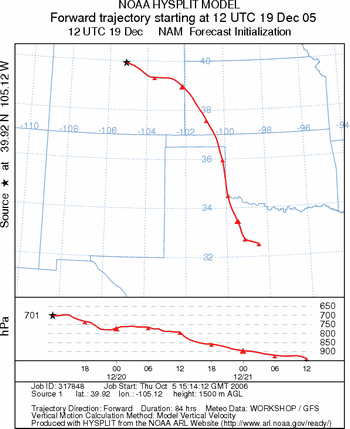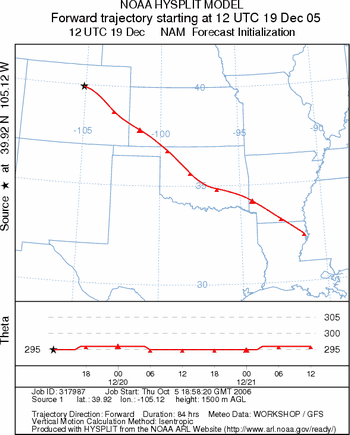Vertical Motion Options |
|||
 Previous |
 Next |
|
|
|
There are five different vertical motion options in HYSPLIT, three of which are currently implemented in HYSPLIT-WEB (model vertical velocity, isobaric, isentropic). As mentioned previously, the suggested default is to use the vertical velocity field that is included with most meteorological data. Other options may be required for special situations such as following the transport of a balloon on a constant density surface, comparing isobaric flow fields between data sets, or situations when the meteorological data’s vertical velocity field may be too noisy compared with the time step at which the data are available (high spatial resolution simulations). 
In the isobaric and isentropic modes, vertical velocities are computed from the equation, W = (- ∂q/∂t – u ∂q/∂x – v ∂q/∂y) / (∂q/∂z)where W is the velocity required for the trajectory to remain on the q surface (pressure or potential temperature). Note that the equation results in only an approximation of the motion and a trajectory may drift from the desired surface.Shown below left is the same trajectory from the previous example using the NAM 12 km vertical velocity fields. To the right is the same trajectory computed using the isentropic flow assumption and choosing the Theta vertical coordinate option from the Display Options menu. This graphic shows that the potential temperature varied by only about 1 degree, however by assuming adiabatic flow conditions the second trajectory ended in northeastern Louisiana after 84 hours instead of north central Texas. The validity of the adiabatic flow assumption would need to be assessed for this case.
|
|||||
|
|||||

